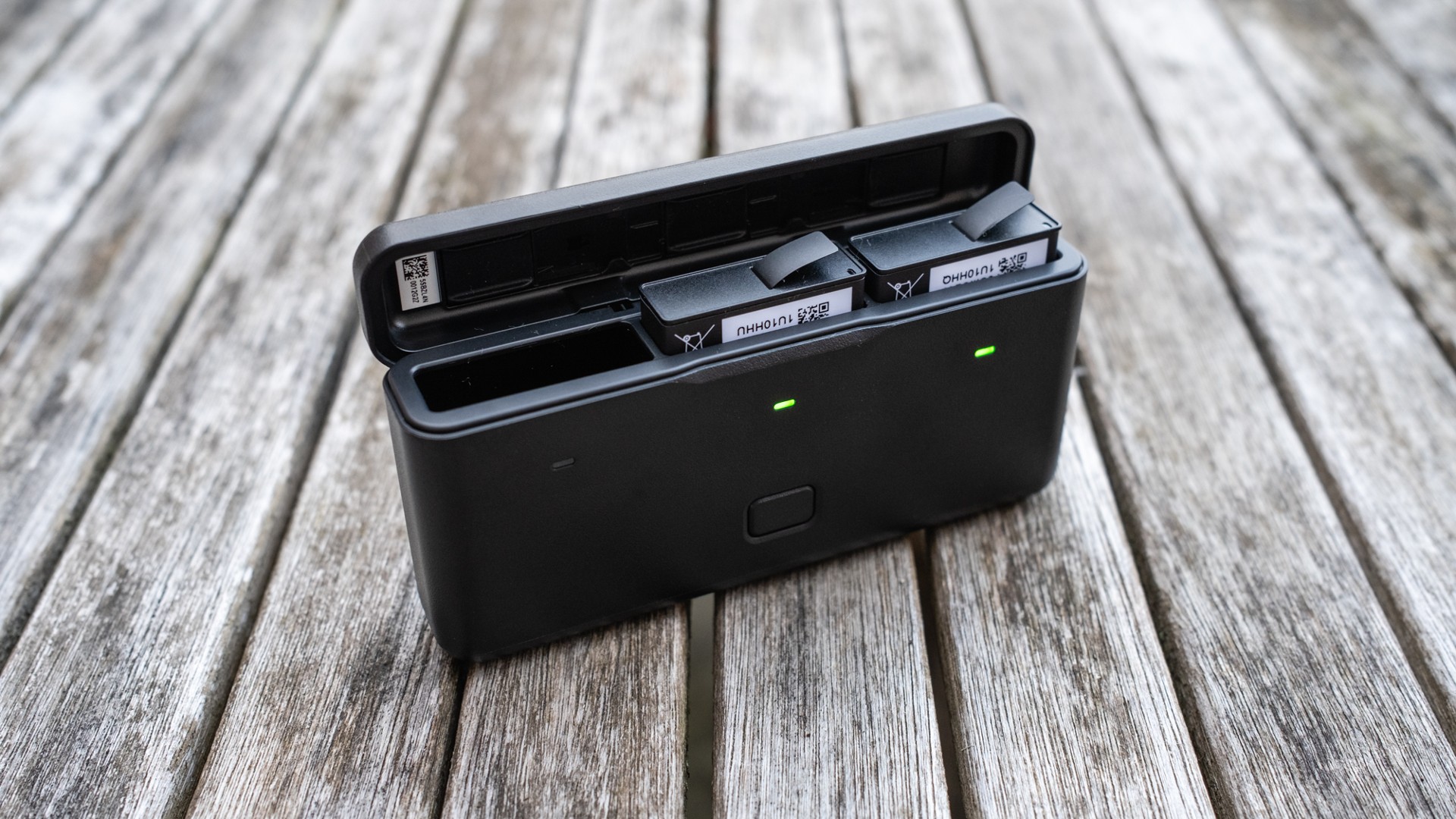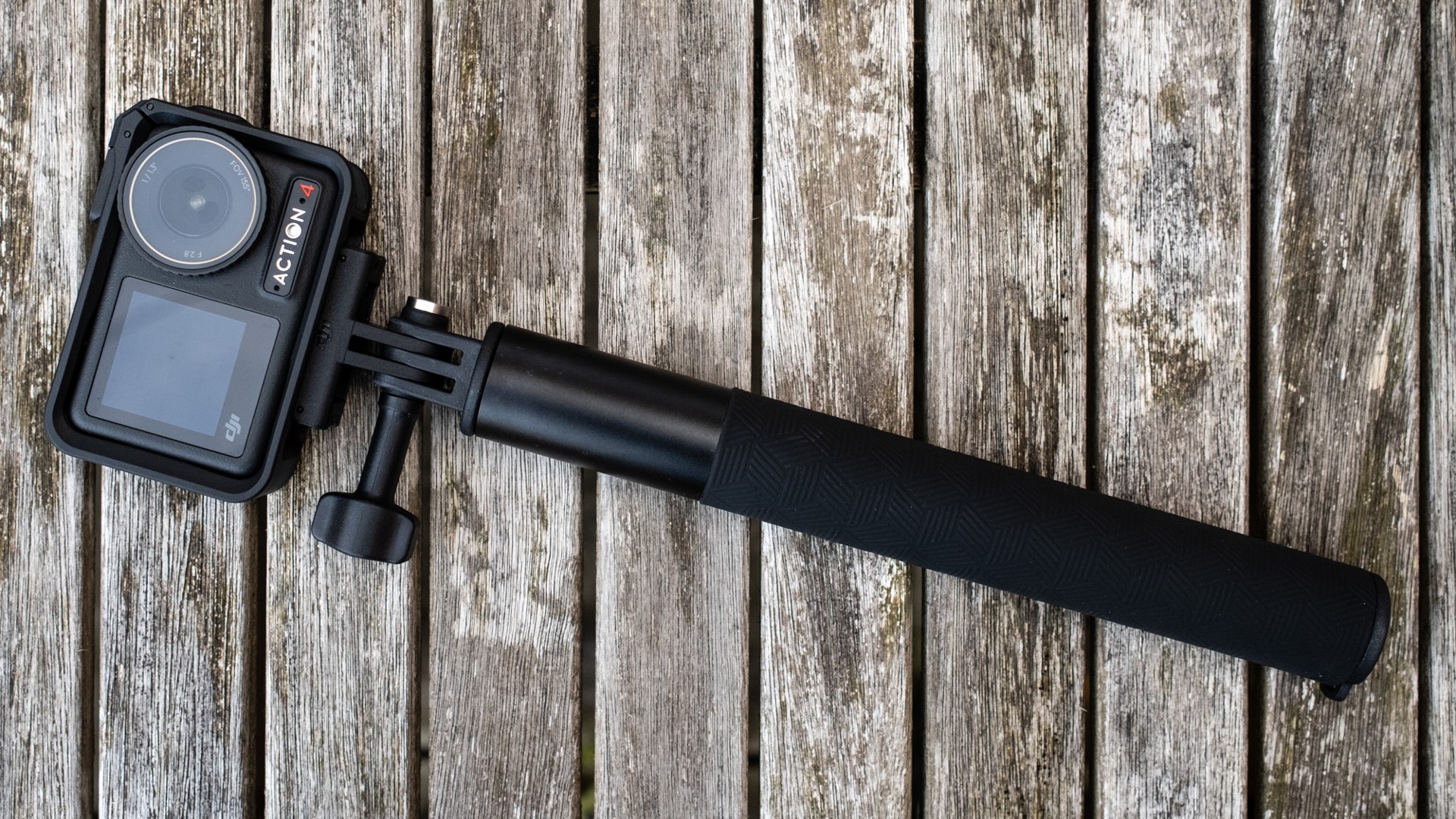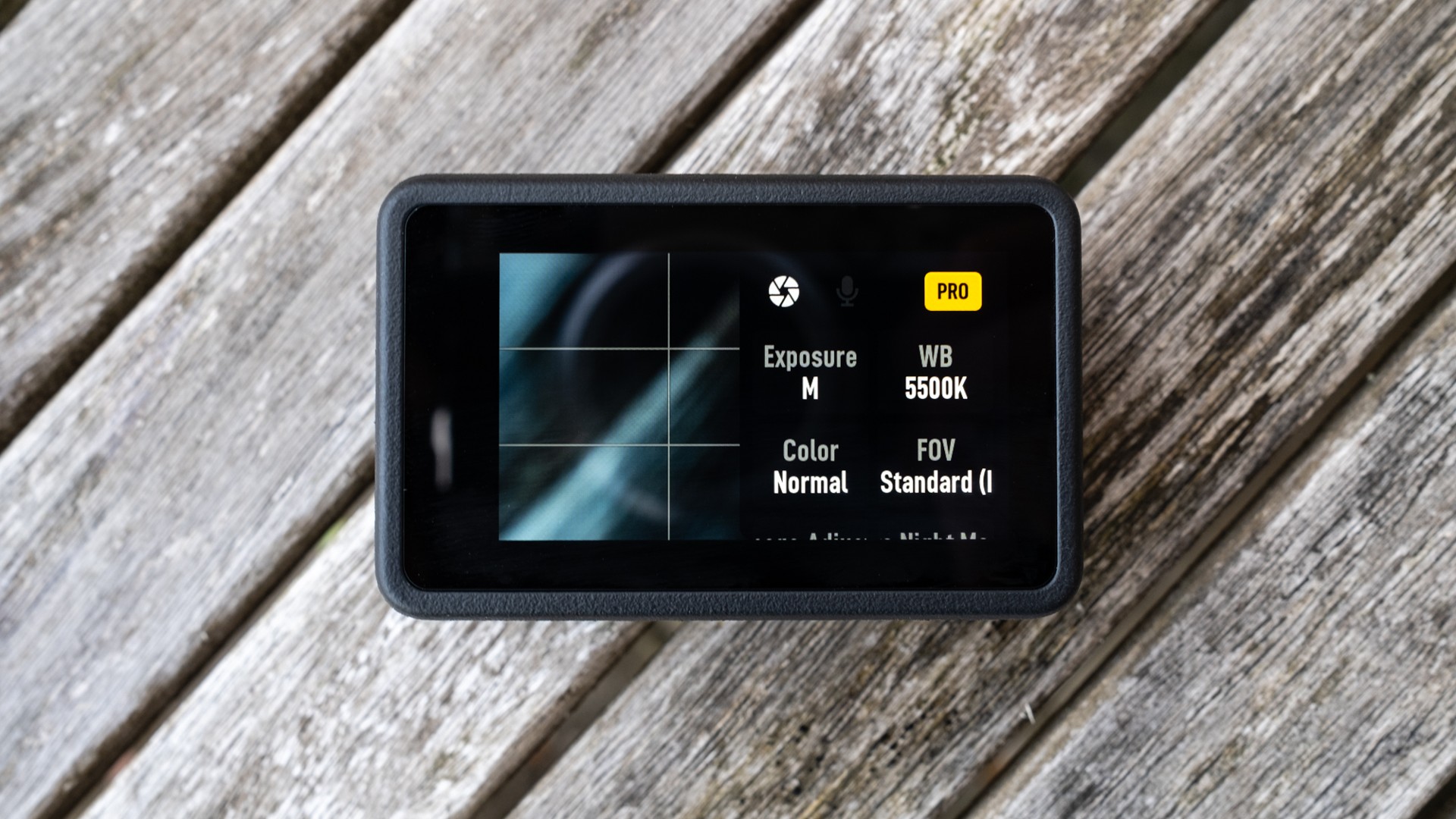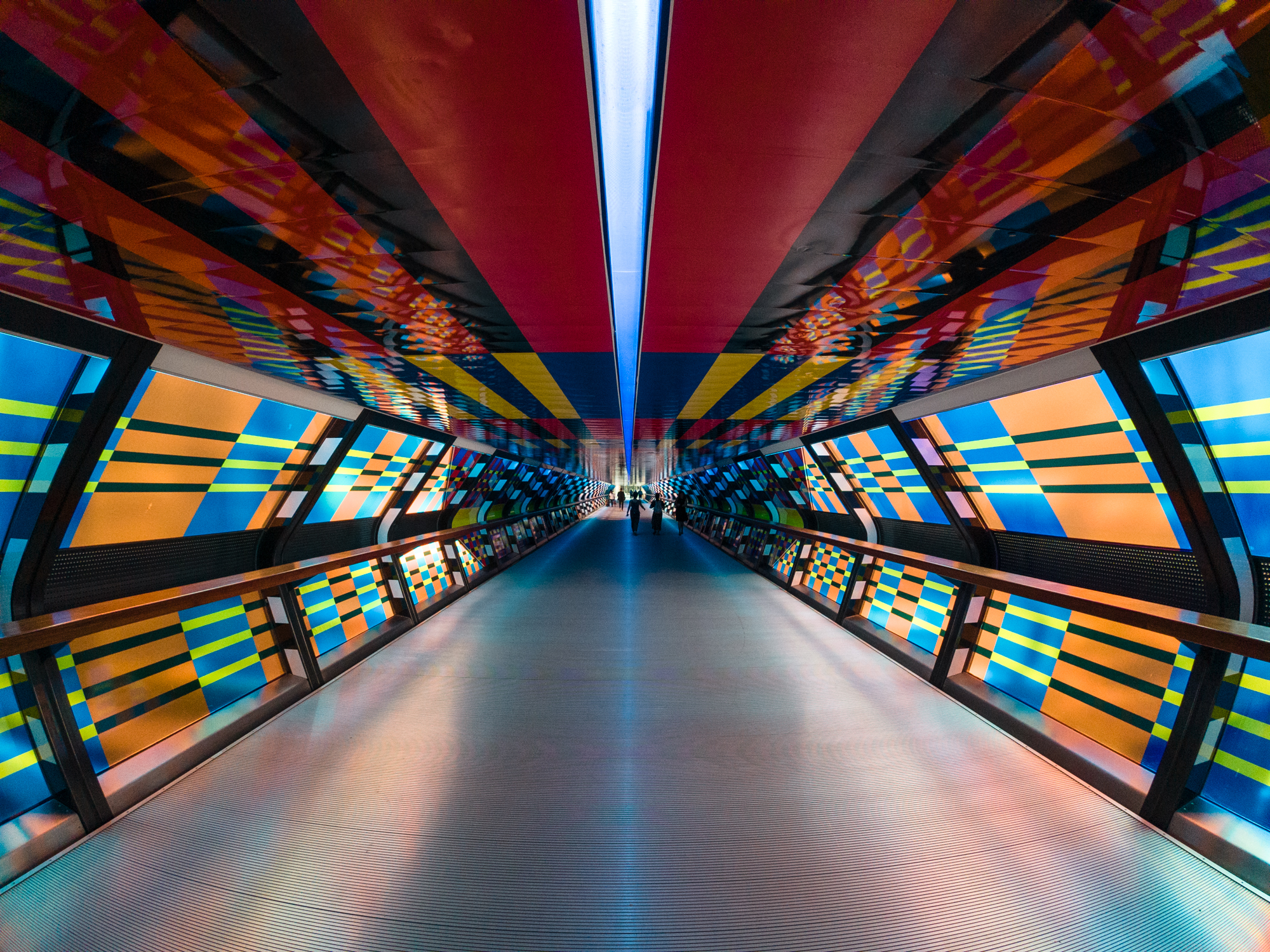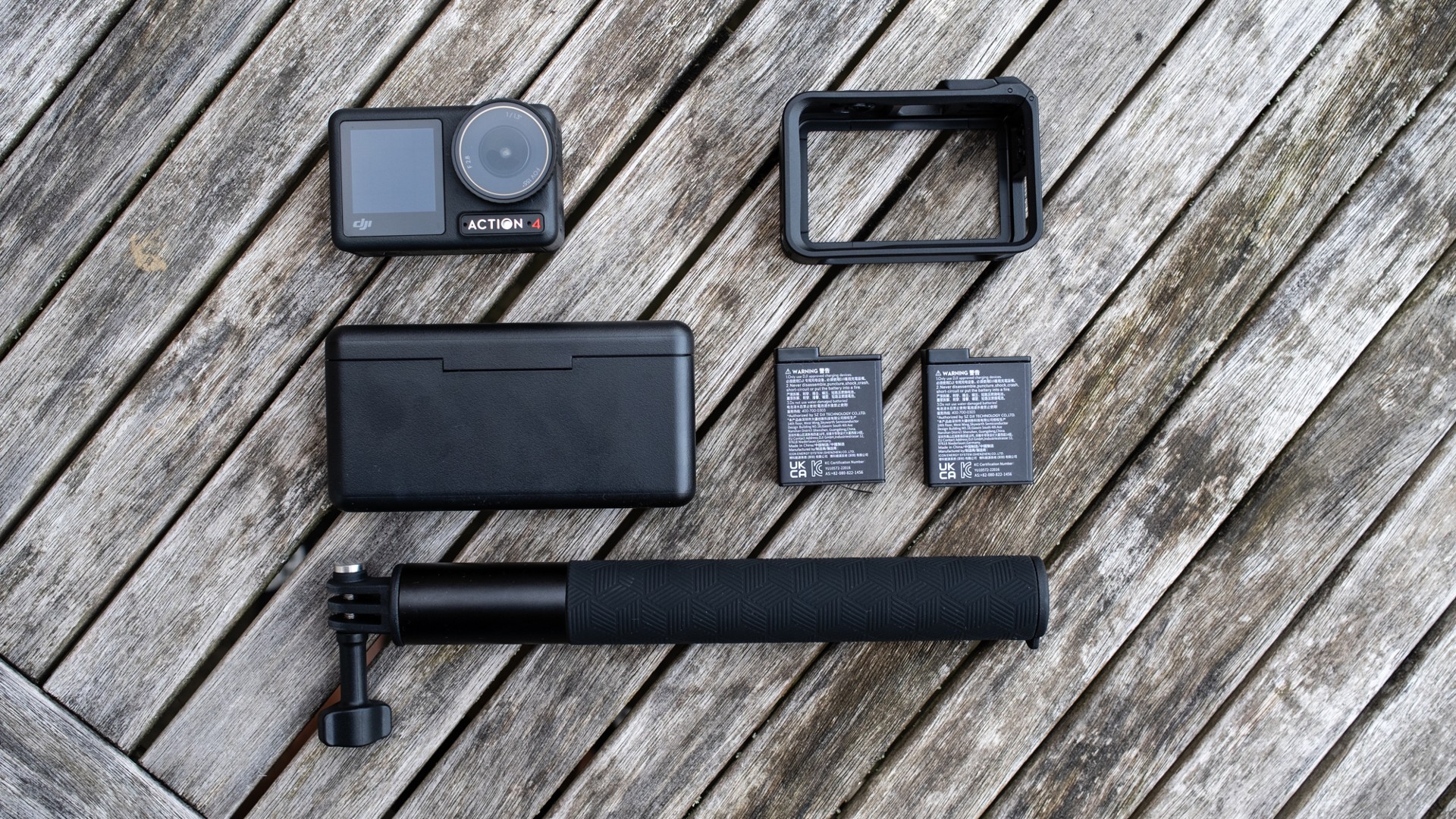Space Verdict
Blending ease of use with excellent image quality and impressive image stabilization, the DJI Osmo Action 4 is an excellent action camera for use with FPV drones.
Pros
- +
Incredibly easy-to-use interface
- +
Impressive image stabilization
- +
Fantastic image quality
Cons
- -
No internal storage
- -
You'll need multiple batteries
- -
Only suitable for mid-size FPV drones and larger
Why you can trust Space.com
Camera: 1/1.3-inch sensor / f/2.8 / 155° FOV
Video resolution: 4K, 2.7K, 1080p
Frame rates: 4K up to 60FPS, 2.7K up to 120FPS, 1080p up to 240FPS
Slow motion: 4K up to 120FPS, 2.7K up to 120FPS, 1080p up to 240FPS
Dimensions: 2.77 x 1.74 x 1.29 in (70.5 x 44.2 x 32.8 mm)
Weight: 5.11 oz (145 g)
Compatible with: Larger FPV drones
Action cameras are an essential element for FPV drones because, in the majority of cases, these drones require an additional camera for capturing video. And although DJI are best-known for manufacturing many of the best camera drones available, the world's leading drone manufacturer is also a heavyweight when it comes to the world of action cameras.
The DJI Osmo Action 4 is the latest action camera to hit the shelves, offering an excellent option for FPV drone pilots flying the best FPV drone kits and also those who prefer to self-build. Of course, as an action camera, the Osmo Action 4 is extremely robust, being waterproof to a depth of 18 m (IP68) and can be used in temperatures as low as -4°F (-20°C).
These features are most welcome and allow the Osmo Action 4 to be used in a wide variety of situations, but for FPV drone pilots, its the image quality and video specs that will be of most interest. Video capture is available up to 4K at up to 60 fps, with 4K slow motion available up to 120 fps, and higher at lower resolutions. You can also capture in Normal and the flat D-Log M profile with four excellent image stabilization options available. To learn more about capturing cinematic aerial video footage check out our beginner's guide to drone video.
DJI Osmo Action 4 review: Design
- Front and rear touchscreens
- Only two physical buttons
- Detachable protective frame
As a dedicated follower of convention, the design of the Osmo Action 4 is typical of action cameras of a similar size and weight, and it looks extremely similar to the DJI Osmo Action 3. The overall design is simple yet functional, with just a power button on the side and a record/shoot button on the top. Settings are accessible using dual touchscreens – a 1.4-inch on the front and a larger 2.25-inch screen on the back. Below the power button is a covered USB-C port, while on the opposite side you can access the battery and the microSD card slot. There's no onboard storage, which is a shame but not the end of the world since high-speed professional microSD cards are inexpensive.
Osmo Action 4 Combo kits come bundled with the Osmo Action Horizontal-Vertical Protective Frame, which allows you to mount the camera in both orientations using the magnetic adaptor mounts (GoPro size) and provides a degree of protection. Without the Protective Frame, the camera can only be mounted in landscape orientation. Adding further protection and maintaining the Osmo Action 4's waterproof credentials is a lens protector that can be swapped out for ND filters. This is ideal for maintaining a correct shutter speed when shooting video.
DJI Osmo Action 4 review: Setup
- Easy-to-navigate user interface
- App control available
- Multiple shooting modes
The beauty of the Osmo Action 4 is how easy it is to use thanks to an intuitive touchscreen interface that can be accessed via both screens. Don't worry about needing to read through an exhaustive manual because most people won't even need to read the quick start guide – it's that easy to use.
During the initial setup, you have to activate the Osmo Action 4 with the DJI Mimo app since you can only use the camera five times without doing so. The Mimo app is easy to use, as you'd hope and expect, and provides remote control, Live View and video editing functionality including AI editing, among other features. But for many people, including FPV pilots, using the camera's menu system for adjusting settings is the most convenient option.
Breaking space news, the latest updates on rocket launches, skywatching events and more!
The Osmo Action 4 has all of the shooting modes we've come to expect in an action camera, including Photo, Video, Slow Motion and Timelapse, so you have most of the functionality you could ever need. The camera is most effective for shooting video, which is the exact shooting mode that's of most interest to professional FPV pilots and enthusiasts aiming to capture the best quality footage possible.
DJI Osmo Action 4 review: Performance
- Fantastic image quality
- Normal and D-Log M color profiles
- Excellent image stabilization
Featuring a camera with a 1/1.3-inch sensor, this drone is the same size as the DJI Mini 3 Pro and offers a fixed f/2.8 and a lens with a 155-degree field of view. The shooting modes on offer make the Osmo Action 4 a versatile option with a huge amount of scope for use beyond FPV drones, but when it comes to video functionality there's everything you need. Image quality for video is excellent with the easy Normal color profile (8-bit) for straight out-of-camera footage, and the flat D-Log M flat profile (10-bit) hugely expands dynamic range and image quality (although does require processing and color grading in editing software).

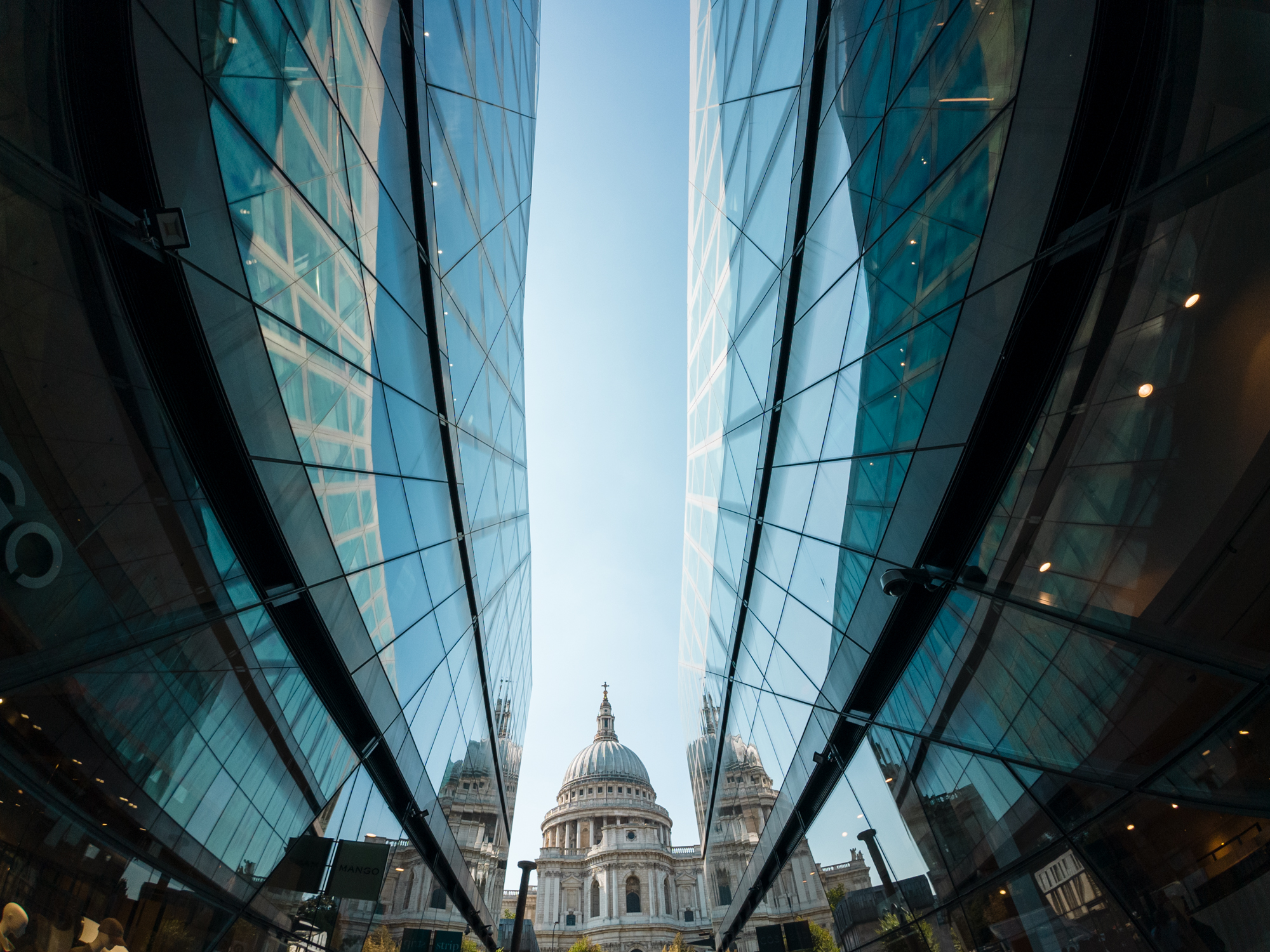
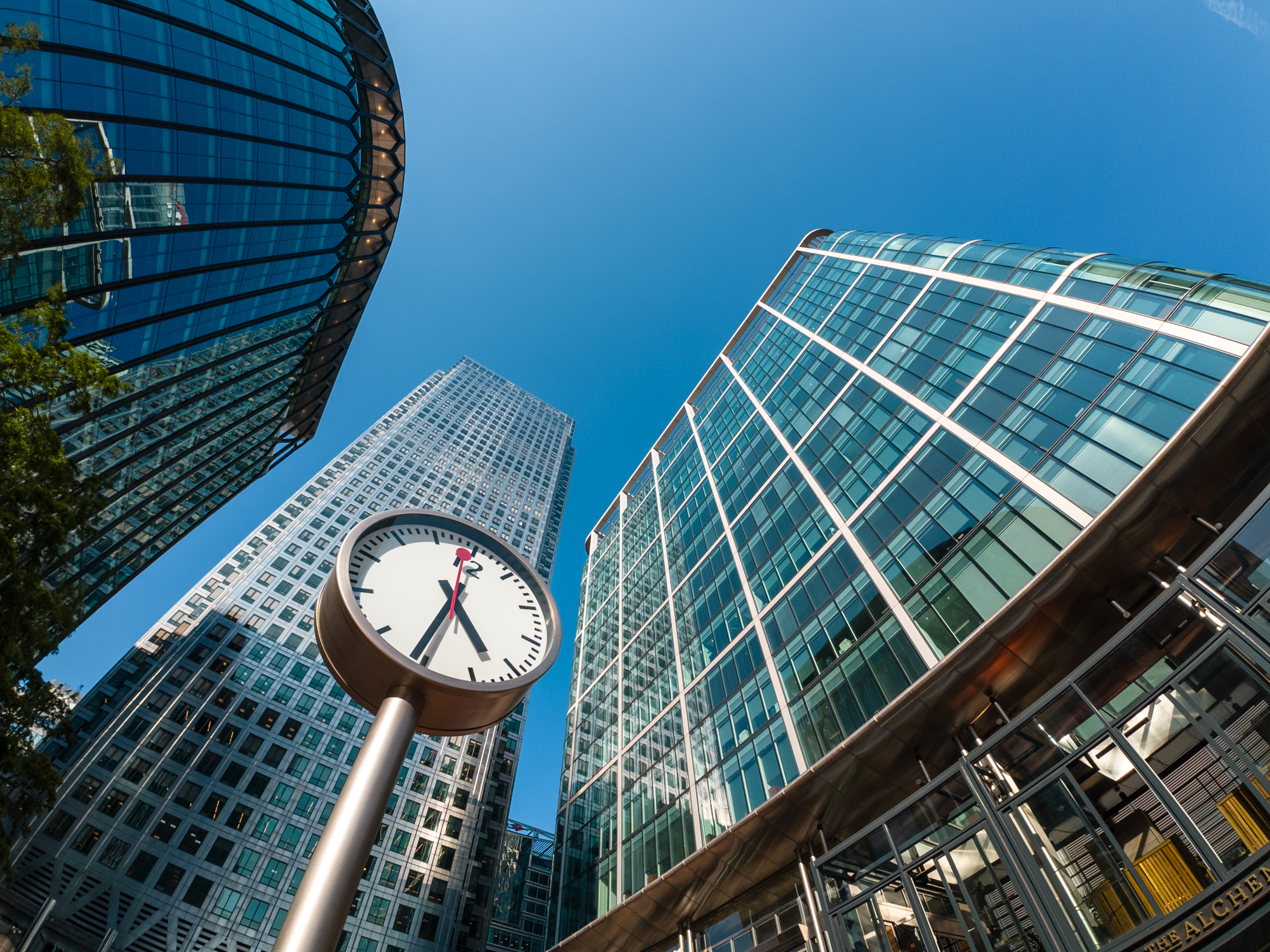

Video capture is available up to 4K at up to 60 fps, with 4K slow motion available up to 120 fps and up to 240 fps in 1080p. This is great because it opens up many possibilities for capturing immersive video. Plus, video can be captured in the standard and more widely compatible H.264 codec or in HEVC for greater compression but with reduced compatibility for playback and editing with lower-end software. Using three built-in microphones, audio is recorded in 48 kHz 16-bit (AAC).
Image stabilization performs extremely well with RockSteady, RockSteady+ and Horizon Balancing (when shooting in 4K). All three options do crop into the image slightly to account for image stabilization compared to when it's switched off, with the latter two options cropping in a little more. All image stabilization settings will work extremely well for FPV video and were rigorously tested with the Osmo Action 4 attached to mountain bike handlebars on a bumpy dirt track.
DJI Osmo Action 4 review: Cost
- $399 / £379 for the Standard Combo
- $499 / £469 for the Adventure Combo
- Multiple Combo kits are available
The Osmo Action 4 is available in 10 Combo Kits aimed squarely at different types of use, so you can select the kit that best suits your main use of the action camera. This includes activities such as cycling, hiking, surfing, vlogging and more.
The least expensive kit is the DJI Osmo Action 4 Standard Combo at $399 / £379. This bundle comes with the Osmo Action 4, one battery, a protective frame, a lens hood, an adaptor mount and other basic accessories.
For FPV drone pilots and many other users, the most useful kit is the DJI Osmo Action 4 Adventure Combo which costs $499 / £469. This kit includes all of the above, alongside two additional batteries, a battery charging hub/case, a 1.5 m extension rod and an additional mini adaptor mount. Not only do you benefit from the additional batteries and the extremely useful charging hub, but the Adventure Combo will save you money when compared to buying the Standard Combo with additional batteries and the charging hub separately.
Should you buy the DJI Osmo Action 4?
The Osmo Action 4 is incredibly easy to use thanks to an intuitive user interface and both front and rear screens. Image quality is excellent overall and the stabilization is incredibly effective, so you won't be disappointed with video footage captured by the camera.
Weighing in at 5.11 oz (145 g), this is a heftier action camera model so it can only be carried by larger and more powerful FPV drones. You'll have to bear this in mind and be sure that your drone is capable of carrying a camera of this weight.
Beyond drones, the Action 4 is a highly capable action camera that excels when it comes to shooting video, slow motion video and timelapse videos. It can also shoot photos with control over settings and the ability to capture in both JPEG and Raw. However, the field of view is pretty wide, which ultimately limits its use in this area.
If the DJI Osmo Action 4 isn't for you
If you fly a smaller FPV drone, such as a 2.5-inch CineWhoop, the Insta360 Go 3 is a tiny and lightweight option that's capable of shooting at up to 2.7K. This action camera is best suited to enthusiast FPV pilots because image quality isn't as high as the Osmo Action 4 and the resolution is also lower.
Those with a larger 3-inch CineWhoop or a 5-inch freestyle FPV drone who would like a similar alternative to the Osmo Action 4 should consider the powerhouse GoPro Hero 12 Black. GoPro is the market leader in the world of action cameras, although it's now facing some seriously stiff competition from DJI.
James is an award-winning freelance landscape and portrait photographer, as well as a highly experienced photography journalist working with some of the best photography magazines and websites with a worldwide audience. He’s also the author of The Digital Darkroom: The Definitive Guide to Photo Editing. www.jamesaphoto.co.uk


